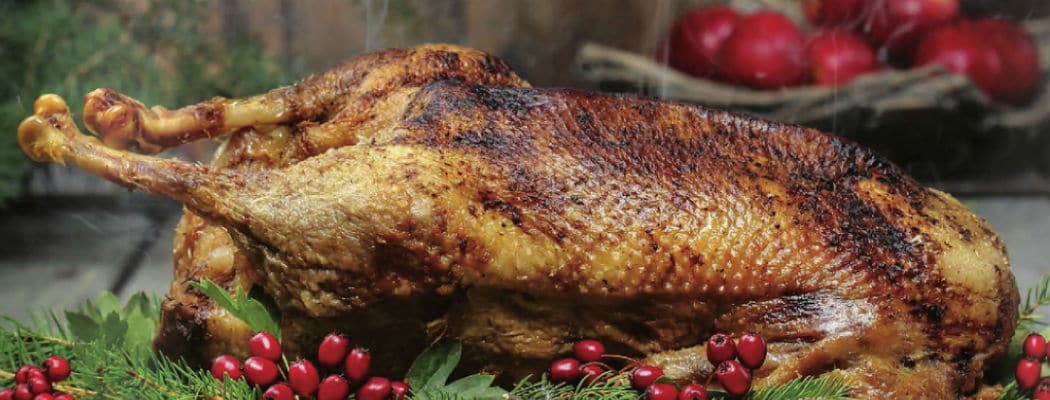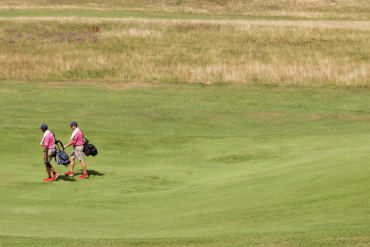Thanksgiving is a nineteenth-century invention. It was declared a national holiday by President Abraham Lincoln in 1863, after two decades of persistent campaigning by a poet and magazine editor named Sarah Josepha Hale. And while America’s favorite foodie holiday may indeed commemorate an actual meal, Thanksgiving is widely seen as a metaphor for the generosity of the local Wampanoags toward the Puritan separatists that allowed the new arrivals to survive in a harsh and unfamiliar environment. On the mainland, this legendary Thanksgiving feast is believed to have taken place in the autumn of 1621, to celebrate the Plymouth Plantation’s first successful harvest. Here on Nantucket, the meal wouldn’t have happened for another thirty-eight years.
 English colonists arrived on the shores of Nantucket in the autumn of 1659. The party came ashore in a small sailing vessel known as a shallop. It consisted of a couple from Salisbury, Massachusetts — Thomas Macy and Sarah Hopcott Macy — their five children, a young widower named Edward Starbuck, and a twelve-year-old boy named Isaac Coleman. Macy was an ardent Baptist, at odds with the Puritan church; he and his companions came to the island seeking new opportunity and the freedom to worship as they pleased. Precisely what provisions the party brought with them in their tiny vessel is not known, but it couldn’t have been much: perhaps a few prized luxuries from home such as sugar, cider vinegar, rum, and pepper, along with staples such as wheat or rye flour, root vegetables, salt, and molasses. The new arrivals are also likely to have brought trade goods such as flints, iron pots, nails, fishhooks, cloth, and cured tobacco that they could have used to barter for food. In any case, it’s clear that those earliest English settlers would not have survived the winter of 1659–60 without the generous assistance of Nantucket’s Wampanoag population, which is believed to have numbered around seven hundred people at the time.
English colonists arrived on the shores of Nantucket in the autumn of 1659. The party came ashore in a small sailing vessel known as a shallop. It consisted of a couple from Salisbury, Massachusetts — Thomas Macy and Sarah Hopcott Macy — their five children, a young widower named Edward Starbuck, and a twelve-year-old boy named Isaac Coleman. Macy was an ardent Baptist, at odds with the Puritan church; he and his companions came to the island seeking new opportunity and the freedom to worship as they pleased. Precisely what provisions the party brought with them in their tiny vessel is not known, but it couldn’t have been much: perhaps a few prized luxuries from home such as sugar, cider vinegar, rum, and pepper, along with staples such as wheat or rye flour, root vegetables, salt, and molasses. The new arrivals are also likely to have brought trade goods such as flints, iron pots, nails, fishhooks, cloth, and cured tobacco that they could have used to barter for food. In any case, it’s clear that those earliest English settlers would not have survived the winter of 1659–60 without the generous assistance of Nantucket’s Wampanoag population, which is believed to have numbered around seven hundred people at the time.
We know that despite a few initial misunderstandings, a spirit of mutual tolerance and cooperation emerged between the early settlers and Nantucket’s resident Wampanoags, and that for many decades the island was free of the devastating epidemics and violence that are a tragic part of our history on the mainland. While there’s no record of a sit-down meal in those first few months, for the sake of argument, and in the spirit of holiday merry-making, let’s assume there was one. In this fictional Thanksgiving feast, what kind of food would have been served?
The centerpiece of this fictional Nantucket meal would probably not have been venison, as the first Thanksgiving in Plymouth is believed to have been, and it probably wouldn’t have been turkey either. Migratory wildfowl, on the other hand, were abundant on the island in the seventeenth century: ducks, geese, loons, passenger pigeons, and even sandhill cranes, whose feeding habits were what led to the English name for a certain tart red berry that was plentiful on the island: the crane-berry, or cranberry.
 Pre-contact, the Indians fished with stone hooks and spears, and they used weirs placed in the island’s estuaries and tidal streams to catch fish. It’s fair to assume that by 1659 they would have had access to iron fishhooks, hemp rope, and other English trade goods, but it’s also likely that traditional fishing methods were still being pursued on Nantucket in the same way they had been for centuries. Seals were hunted for their skins, meat, and fat, and beached “drift whales” were a prized windfall.
Pre-contact, the Indians fished with stone hooks and spears, and they used weirs placed in the island’s estuaries and tidal streams to catch fish. It’s fair to assume that by 1659 they would have had access to iron fishhooks, hemp rope, and other English trade goods, but it’s also likely that traditional fishing methods were still being pursued on Nantucket in the same way they had been for centuries. Seals were hunted for their skins, meat, and fat, and beached “drift whales” were a prized windfall.
Our fictional meal would very likely have contained shellfish, something the English were known not to relish except in emergencies. “First a feast and then a famine,” the saying went. “Then out on the flats a’clammin’.” But in the fall of 1659, it is likely that the colonists spent plenty of time out on the flats, or in Madaket harbor and other good clamming areas, possibly guided by their Wampanoag hosts, foraging for quahogs, oysters, scallops, and mussels.
The Nantucket Wampanoags were also farmers, although not in the way the English thought of farming. They likely would have been able to provide various dishes made from what they’d grown in the previous season, including corn, beans, and “pumpion” (a catch-all name for various kinds of winter squash and pumpkin). And of course, in part because of the Wampanoag practice of burning the land periodically to create habitat for migratory fowl and encourage the growth of fruit- bearing plants, the island was a great place for gathering blueberries, bearberries, blackberries, beach plums, and fox grapes, all of which could be dried to last through the winter.
Nantucket Wampanoags moved around seasonally. They spent the summer close to the ocean, but in the late fall of 1659 they would likely already have relocated to their wintering places, inland, in low, south-facing hollows. So let us imagine our way back to an afternoon in November, and a gathering of Indians and colonists, on the shore of a kettle-hole pond in the Middle Moors. Because we’re imagining freely, let’s make it an unusually warm and pleasant late November afternoon, with the sun on our shoulders and the fragrant smoke from a cooking fire in our nostrils. Now, let’s savor the tastes of Nantucket’s first Thanksgiving. Bon appétit!
FIRST COURSE
A Nantucket pemmican of smoke-cured striped bass, mealy-plum, seal fat, and crane-berries Stewed pumpion (pumpkin) made tart by a dollop of Mr. Macy’s cider vinegar
Duck roasted in an underground oven and seasoned with a dash of Mr. Macy’s East India pepper A stew of beans, corn, wildfowl, winter squash, Jerusalem artichoke, and clam broth
SECOND COURSE
A bluefish-head soup with Sesachacha oysters and coarse-ground corn meal, thickened with dried turtle eggs
A succotash of quahogs, corn, beans, and crane-berries
DESSERT
A corn “samp” porridge with dried beach plums, fox grapes, blueberries, strawberries, and acorns, sweetened with molasses supplied by Mr. Macy.
This imaginary feast would not have been possible without the kind assistance of Allen Reinhard of the Nantucket Conservation Foundation and Elizabeth Oldham of the Nantucket Historical Association Research Library. Works consulted include Abram’s Eyes by Nathaniel Philbrick and “Nantucket’s Native Foodways,” by Debra McManis, which appeared in the NHA’s magazine, Historic Nantucket, Volume 59:1, 2009.






